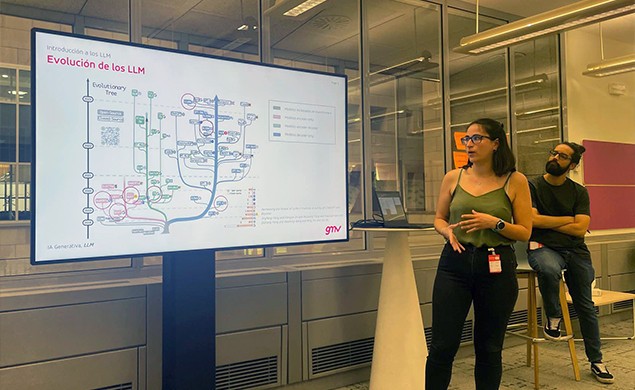Shaping the new era of generative AI

Generative artificial intelligence is dominating the headlines in the technology sector. This is no surprise considering that only a few years ago the possibility of interacting with an AI that could offer fully coherent (and more critically, extremely useful) answers or images was unfathomable. This revolution is being driven by tools such as ChatGPT (OpenAI), Bard (Google), DALL-E, Midjourney, GitHub Copilot, and IBM watsonx.
Within this scenario, Patricia Hernando and Borja Irigoyen recently took part in the IBM meetup “Everything you wanted to know about generative AI” to explain the importance of large language models (LLMs). LLMs are machine learning models trained on large amounts of data to understand and learn linguistic patterns, allowing them to answer questions, write texts, come up with ideas, and simulate conversations in a coherent and convincing manner. Given their encyclopedic knowledge and ability to adapt to different topics and writing styles, LLMs can be applied across a wide range of areas, from virtual assistants and chatbots to machine translation, content creation, and decision-making support.
During their presentation at the IBM meetup, Hernando and Irigoyen discussed the state of the art of the various LLMs available. They also covered how a generative text model is developed and how GMV has used multiple technologies to develop its own model for several use cases: programming a function, asking a question about a programming language, and describing a concept, to name a few.
These technologies are playing an ever greater role in business solutions that help to optimize business operations, boost employee productivity, and streamline organizational processes.